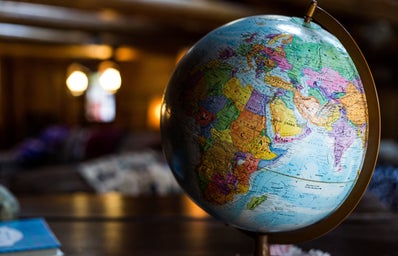With the worries and oddities of the COVID-19 outbreak flooding our minds, you probably had no idea that it was Asian Pacific American Heritage Month. But let’s be honest here, even if there wasn’t a global pandemic going on, would you know that this month is Asian Pacific American Heritage Month? Probably not.
Aside from the lack of attention this historic month receives, I decided to give Asian Pacific American Heritage Month the recognition it deserves by highlighting some recent, monumental moments and achievements in Asian American and Pacific American history (in no particular order).
Utah Federal judge’s statement says people born in American Samoa should be recognized as citizens
American Samoa is an unincorporated U.S. territory located in the South-central Pacific Ocean. American Samoa became a U.S territory in 1900 in exchange for protection during any time of war.
While American Samoa is in a long line of U.S territories such as Guam, Puerto Rico and the U.S Virgin Islands, American Samoa is the only one of them that does not give citizenship to those who are born there. Furthermore people born in American Samoa are considered U.S. nationals, where they must pay taxes but are unable to vote, apply for certain government positions or run for office.
In order to counter that disparity, American Samoans sued the U.S. government to be recognized as citizens. As of 2019, U.S. District Judge Clark Waddoups sided with the American Samoans claims and stated that American Samoan “Utah residents are entitled to birthright citizenship under the 14th Amendment to the Constitution and ordered the government to issue them new passports,” according to an article written by the Associated Press. However, it is still unclear on how and if that will apply to states outside of Utah.
Having this court case sided with by a Federal judge is monumental for American Samoans nationwide and in the territory. Despite whether individual American Samoans want automatic citizenship or not, acquiring it would allow them more rights as an American instead of merely just paying taxes to a country who won’t even recognize them as one of their own.
Even though the The U.S. Supreme Court declined taking the case in 2016, having this case make it even that far allowed for Samoan voices to be heard at a national level. While Samoans make up under 1% of the U.S. population – with one-third of that population residing in California – them and their American Samoan counterparts still deserve to be heard in arguing against their exploitation by the U.S government without proper representation.
Protests against 30 Meter Telescope on Mauna Kea in Hawaii
Demonstrations in Hawaii dominated the news last year in protest of the thirty meter telescope that had plans of being constructed on Mauna Kea, a dormant volcano on the big Island. While TMT International Observatory was set on building on Mauna Kea due to its “optimal observing conditions,” Native Hawaiians wanted to preserve the sacredness of the mountain arguing that they did not want another observatory on land that inhibits significant Hawaiian history.
“We have always been here and we will always be here,” protest leader Kealoha Pisciotta said in an article for the Nature research journal, “The TMT will never be built.”
The protests have been going on since 2015 when TMT announced their building site, and didn’t gain traction until protesters blocked entry in order to halt construction in July 2019.
This protest is a major stepping stone for Pacific Islander and Hawaiian culture due to natives finally having their voices heard globally on their contempt toward organizations and the U.S. government for disregarding their heritage by using their land for consumption. Many natives feel like their rich history and resources are being stripped away due to the demands of the tourism industry.
And while tourists are not aware of the destruction they’re causing to the islands’ environment and traditions, the attention the Mauna Kea protests got served as a major stage for native Hawaiians to vocalize their dismay in how their island has been treated.
Success of sitcom “Kim’s Convenience” & its impact by accurately depicting Asian Immigrants
“Kim’s Convenience” is a Netflix original that is centered around the life of an immigrant Korean family based in Toronto, Canada while running a convenience store and adjusting to an evolving society. While the show premiered back in 2016, it did not gain popularity in the U.S. until last year.
The show has made major strides in accurately depicting the nuances of Asian immigrant families, with the creators of the sitcom striving to televise and enforce “archetypes not stereotypes.”
The significance in having a major television series accurately represent a foreign people group without playing into racial stereotypes is astronomical in terms of representation.
“I wasn’t seeing Asians on stage, I wasn’t seeing Asian stories,” creator Ins Choi stated in an NPR interview after recalling his own immigration to Canada from Korea as a motivator to produce “Kim’s Convenience.”
Unlike “Kim’s Convenience,” other popular media productions centered around an Asian dynamic, like Crazy Rich Asians, have not satisfied the Asian community in correctly exhibiting daily life as an Asian American. In the case of Crazy Rich Asians, many complained that it glorified the idea that Asian validity only stems from achieving the American dream through extreme wealth, enforced negative racial stereotypes within their own community, and promoted colorism – a major problem in Asian representation in the film industry.
With the growth of popularity in the U.S., “Kim’s Convenience” will serve as a great example in correcting some of the issues of Asian representation in Hollywood.
President Trump names six Indian-Americans who are going to revive the U.S. Economy
In lieu of the Coronavirus pandemic, President Donald Trump created a list of individuals who are going to save the U.S. economy and included six Indian-Americans, saying they are “smartest” and the “brightest”.
The population of Indians in the U.S. is one of the fastest growing in the country, experiencing a growth by 38% between 2010 and 2017.
Indian-Americans are often overlooked when most people think about Asian-Americans, typically associating the term with groups with a north Asian descent, such as the Chinese. However with Donald Trump highlighting the six Indian individuals in an official statement to the country, it will bring light to a group who goes largely unnoticed in the Asian American community.
Furthermore, Indians suffer their own set of stereotypes unique to them; however the six mentioned in the presidential statement could serve as a platform to eliminate some stereotypes.
The individuals recognized are:
- Sundar Pichai, CEO of Alphabet Inc. and its subsidiary to Google
- Satya Nadella, chief executive of Microsoft
- Arvind Krishna, CEO of tech company IBM
- Sanjay Mehrotra, Micron tech group member
- Ann Mukherjee, CEO of Pernod Ricard North America
- Ajay Banga, President of Mastercard
While Indian-Americans should be valued for more than just their contributions to the United States, the six mentioned above have the potential in opening the gateway of opportunities for other Indian-Americans’ success due to their intellect, not the color of their skin and the stereotypes that come with it.


